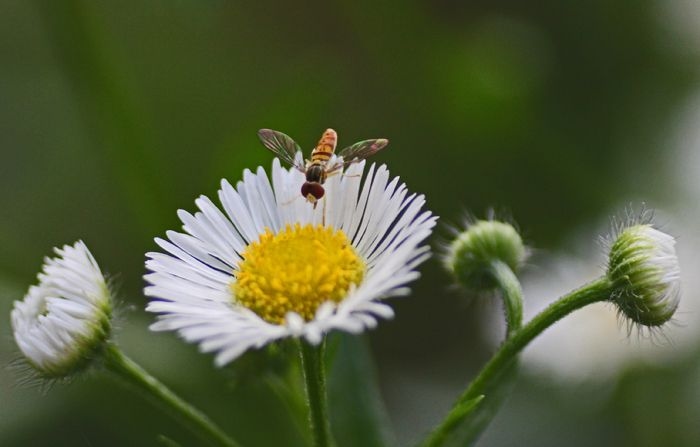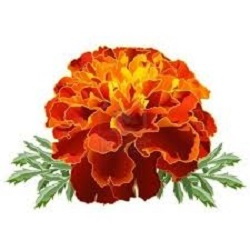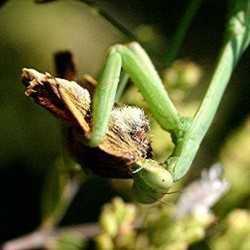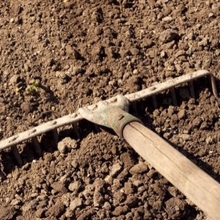These are the bugs you want to keep around – in your garden, that is
What do you do when you see bugs in your garden? If you are like many of us, your first thought is “Oh, no! How do I get rid of them?”
Before you reach for the insecticide, however, you need to know that many insects are helpful to our plants. In fact, they help keep the “bad bugs” – those that do devour your plants – at bay. Here is a list of the top “good bugs” and how you can attract them to your garden.
Lacewing
Pale green or light brown in color and lacey, as their name suggests, adult lacewings feed on aphids, small caterpillars, mealybugs, mites scales and whiteflies.
If you would like to gain the beneficial effects of these voracious bad bug eaters, plant angelica, coreopsis, cosmos and sweet alyssum in your garden.
Did you know that you can purchase lacewing eggs for your own aphid-eating army?
Dragonfly
There are hundreds of dragonfly species, and they vary in size and color. You can identify them by their long, narrow bodies, their four transparent wings and their large compound eyes. Adult dragonflies gobble up mosquitoes, aphids and other pests. They consume 10 to 15 percent of their own weight each day.
Want to attract more dragonflies to your garden? They love ponds, marshy areas and wetlands.

Ladybug
Many people just think of the familiar red spotted variety, but there are more than 400 species of ladybugs in North America. Most adult ladybugs and their larvae feed on aphids, scale and other soft-bodied insects.
Scented geraniums and angelica might attract them to your garden.
Live ladybugs can be delivered right to your door.
Ground beetle
These nocturnal beetles hide during the day under rocks and logs and then feed on snails, slugs, cutworms, cabbage maggots and other garden pests by night. It is estimated that just one ground beetle larva can eat 50 caterpillars.
You can attract ground beetles by adding perennial ground covers, logs and stones to your landscape design.
Aphid midge
Got a problem with aphids? Aphid midge larvae will devour more than 60 species of aphids after paralyzing them with their poisonous saliva. Yuk!
Plants with pollen will attract aphid midges.
Spined Soldier Bug
This “good bug” looks similar to a pesky stink bug except for its distinctive pointed shoulders. In gruesome fashion, spined soldier bugs kill their victims by harpooning them, injecting them with a paralyzing substance and then sucking out their bodily fluids. They devour grubs, gypsy moth caterpillars, webworms, armyworms and the larvae of beetles such as the Colorado potato beetle and the Mexican bean beetle.
These bugs like to shelter in perennial beds.
Tachinid Fly
They look very much like common houseflies, but these “good bugs” feed on garden pests such as armyworms, cutworms, tent caterpillars, gypsy moths, cabbage loopers, sawflies, Japanese beetles, sowbugs and squash bugs.
To attract tachinid flies, plant dill, sweet clover, parsley and other herbs in your garden.
Hover fly (sometimes called syrphid flies or flower flies)
Adult hover flies look like tiny bees or wasps with striped abdomens. Their larvae, which are gray-green and have pointed heads, feed on aphids in tight spaces and in early spring when other beneficial insects aren’t active yet.
Flower flies help pollinate strawberries and raspberries, and research is revealing that they contribute to the pollination of some vegetables and fruit trees.
Fragrant herbs such as oregano, sweet alyssum, buckwheat, garlic chives and bachelor buttons attract hover flies to your garden.

Spider
All spiders consume insects and are very important in garden pest control. Some pests will abandon an area completely once spiders show their presence. Most of the spiders found in gardens are harmless to you and have no interest in invading your home.
Spiders especially like caterpillars, plant bugs, cucumber beetles, grasshoppers, scarabs, thrips and flies. Yes, spiders will also eat other “good bugs,” but the good they do in eating pesky bugs outweighs this problem.
You can make your garden hospitable to spiders with perennial plantings and straw mulches.

Honeybee
Much has been written lately about our dwindling wild honeybee population -- and for good reason. Honeybees are important pollinators of many plants that are essential to our food supply.
Adult honeybees have fuzzy gold-and-black striped bodies with transparent wings. They are about 2/3 inch in length and often carry balls of yellow pollen on the backs of their legs.
To encourage the presence of wild honeybees in your garden, grow flowering plants. They especially are attracted to:
- alyssum
- anise hyssop
- butterfly weed
- aster
- coneflower
- geranium
- bee balm
- poppies
- black-eyed Susan
- clover
If you have the property, beekeeping is a great way to help the fragile pollinator community.
When you purchase through links on our site, we may earn commissions at no cost to you.


















